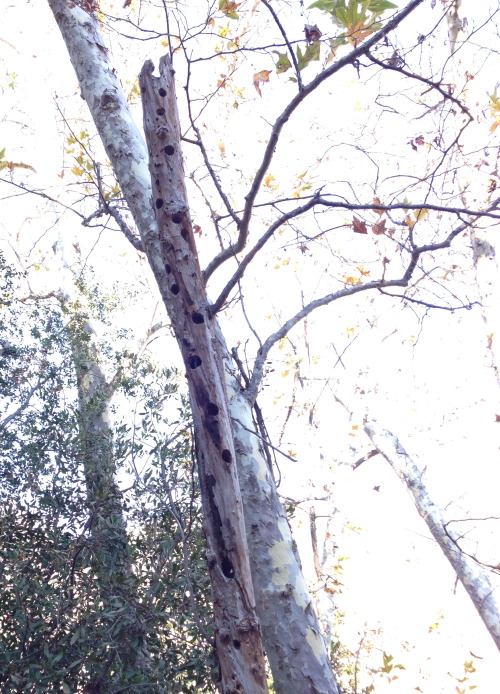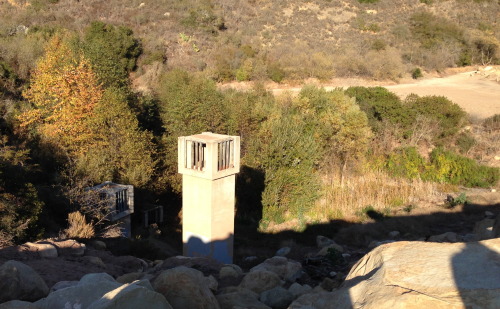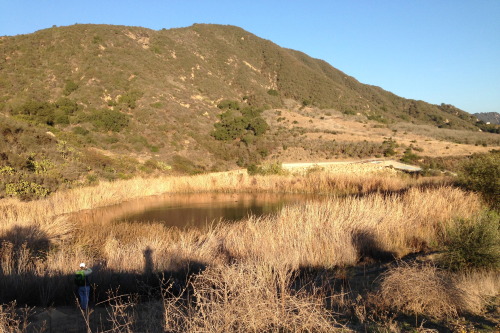




Photos from our afternoon hike into Rancho Monte Alegre for the Carpinteria Christmas Bird Count on December 20, 2013.
View of Carp from RMA – Rancho Monte Alegre is a former ranch that is being developed with a small number of super-expensive hilltop estates. (I guess the brochure probably doesn’t describe them exactly like that, but that’s what they are.) It’s behind a locked gate, but they’ve been nice enough to let us enter the property each year for the Christmas Count.
I like this first photo because you get a really nice view of Carpinteria, where I live. There’s the city itself along the ocean, then a row of greenhouses that are used for flower-growing (mostly), then a belt of avocado orchards and ranch houses, leading up to the chaparral where the photo was taken.
Carp from the Santa Monica Creek debris dam – Santa Barbara County flood control (I assume) has done a bunch of work on Santa Monica Creek, including building a big dam of boulders across the creekbed. The idea, I think, is that in the event of a major mud/debris flood, all that stuff would be caught by the dam so it wouldn’t destroy the housing downstream. As someone who lives in one of those houses I appreciate the sentiment, though I kind of wish the flood control work (which happened in the early 1970s) had given a little more thought to the habitat values of the creek. Especially in the lower portion, the channelization of the creek to make it a more efficient water-conveying device also served to make it essentially unusable by migrating steelhead trout, which is a real shame given the great steelhead habitat in the upper creek. It also sacrificed a lot of prime riparian habitat along the lower creek.
Anyway, here we are standing on the debris dam looking south across some of the big trees that remain in the upper reaches of the creek. That’s Frederic, one of the awesome citizen scientists who joined me for the afternoon outing.
Standing snag – Down in that riparian habitat that you can see in the previous picture is this sycamore snag. I don’t know which woodpeckers nested in it (Nuttall’s, maybe?) but clearly there were many years’ worth of nest holes hollowed out in that trunk.
Flood control inlets – This is a really interesting part of the flood control feature on the creek. We’re standing on the same debris dam as in photo #2, but this time looking north into the catch basin. There are three different boxy structures at different heights; each one contains a giant culvert that leads under the dam. The idea, I assume, is that in a flooding event water will collect behind the dam, and as it rises it will begin to drain through one, then two, and finally through all three of the culverts. You can’t see it in this photo, but there was a pool of water at the level of the lowest culvert, and from atop the dam we could hear the water trickling into it.
RMA cattle pond – This artificial pond was our main objective for the Christmas count, because it’s one of the few places in our count circle that reliably produces sightings (or more properly, hearings) of Sora, a shy rail that likes to hide in cattails. We tried clapping next to the reeds (which can startle Soras into vocalizing), but had no luck. Later, though, on our way out, we stopped by the pond one more time, and Wayne, one of our group, played a recorded Sora call — and a Sora responded! Yay!
The full list of bird species recorded by our group is in this post.
Reposted from http://lies.tumblr.com/post/70720254085.





